March 2023: As part of a larger trip visiting Pacific Island nations and a “Baby Moon,” my wife Paula and I visited Tasmania for 3 days. Tasmania, an Australian island state located to its south, is known for its wilderness and unique wildlife. such as the Tasmania Devil. To see some of the wildlife of Tasmania, I made the focus of our Tasmania trip, Maria Island World Heritage Area, which is renowned for its wildlife.
About Tasmania
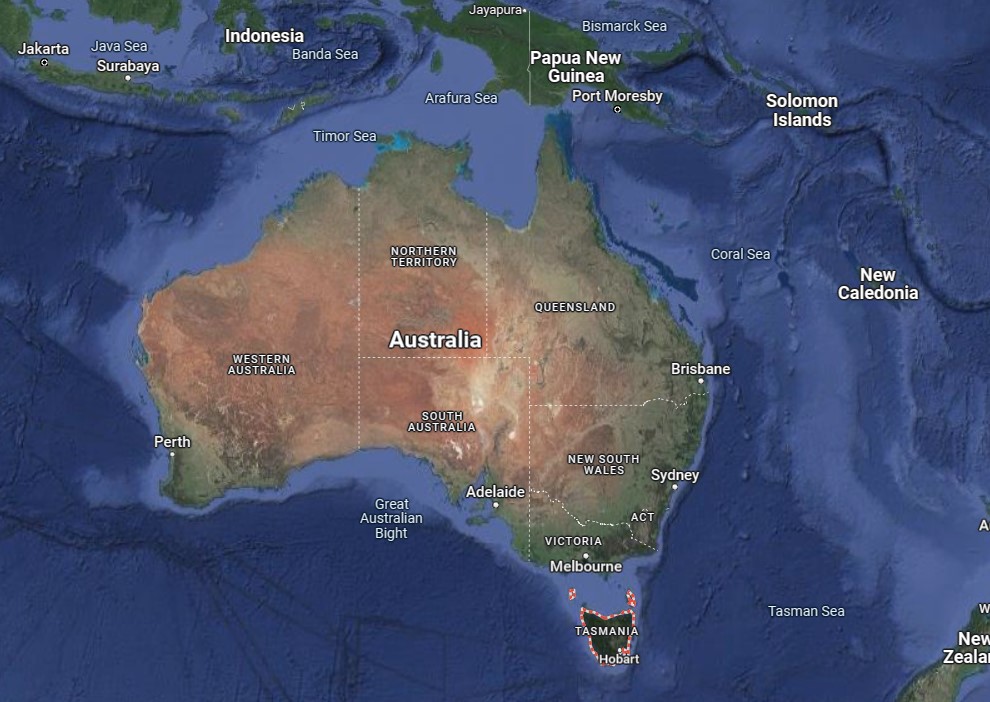
Location of Tasmania
Tasmania an island state of Australia is located to the south of the continent and to the north of Antarctica with nothing but a lot of cold and rigged ocean in between. Tasmania is Australia’s least populated state, and it was originally founded as a penal colony and ruins of old British penal colony buildings are still left in various states of decay all around the island. There was an Aboriginal population on the island before the arrival of Europeans but most of the Aborigines were decimated and those that survived were relocated to a small island of off Tasmania’s coast.
Tasmania today like the Southern United States has a reputation from the northern states as being backwards and inbred. This reputation is fading away as more and more tourists from the rest of Australia visit Tasmania and discover its natural beauty and discover the true Tasmania.
Tasmania is indeed beautiful and in our 3 days on the island, we only scratched the surface of its beauty. There are millions of square miles of wilderness, mountains, huge forests and pristine wild stretches of rugged seacoast. Then there is the unique wildlife such as the standard marsupials, wombats, kangaroos shared with continental Australia but whereas many of these animals had been hunted to extinction in the mainland, there are still thriving numbers of them in Tasmania because of the island’s isolation. One example of this is the Tasmanian Devil, which used to also live in Australia but was hunted to extinction there and only remains in Tasmania. Sadly, the Tasmanian Devil is threatened in Tasmania now too due to a contagious form of cancer that has wiped out 70 percent of its population.
Maria Island World Heritage Area
The focus during our trip is often the case was on seeing wildlife and Paula and I both love wombats and there is no better place to see them in the wild than on Maria Island World Heritage Area, a protected island reserve where wombats, kangaroos, and pademelons abound. The wombats are so common there that park rangers ask tourists to promise not to touch them. Maria Island is also home to Tasmania Devils that have recently been re-introduced to help create an isolated population that is safe from the contagious cancer killing them en-mass on the main island. The other animals will just have to adapt to having a vicious carnivore that wants to eat them for the first time in decades since the island has been protected. Aside from wildlife, Maria Island also has historical significance and there are many ruined buildings left over from when the island was used as a British penal colony in the 1800s. Visitors can stay the night on the island in a tent or in one of the old barracks for prisoners that are now used as basic accommodations for overnight visitors.
To get to Maria Island, I booked ferry and national park tickets in advance from Triabunna, and we drove a rental car from Hobart to Triabunna. The drive was only a few hours on a mostly two-lane road through forests, and hills before arriving at the small sleepy town of Triabunna. I booked a stay in a historical old cottage in town and after 6pm there wasn’t much to do in town other than freeze in the cold blistery Antarctica winds while walking around town since everything was closed. Luckily, we picked up some food and drinks at a grocery store on the way.
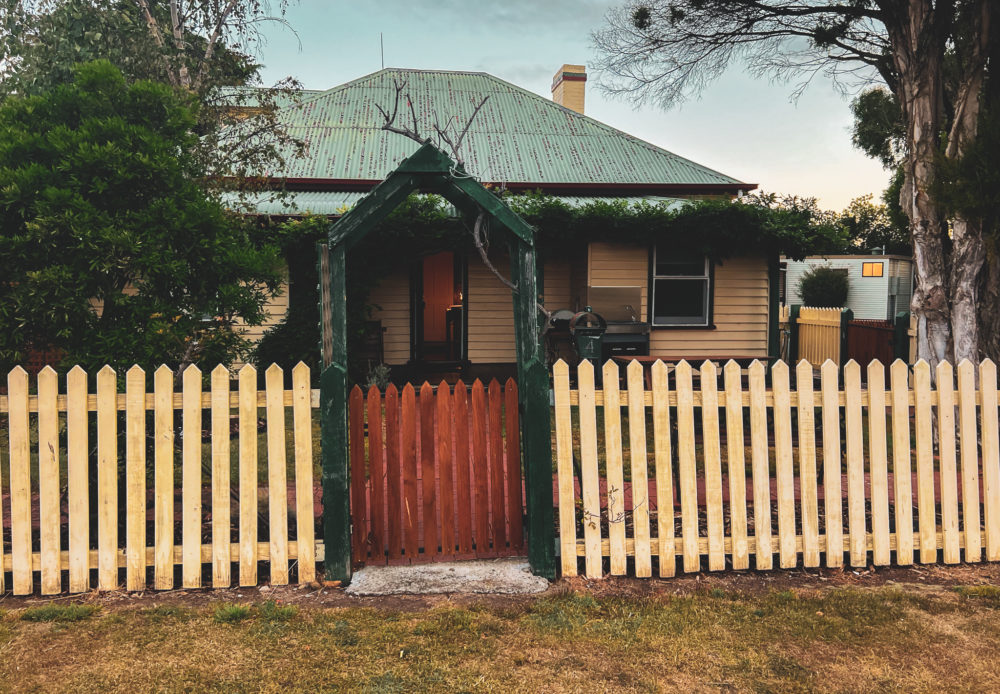
Historical cabin we stayed at in Triabunna
The next morning, we caught the earliest ferry to Maria Island, which was within walking distance from our cabin and along with a small group of tourists we were off to maria island. We brought all the food and water we would need for the day because there are no facilities on the island. It is a wilderness area and there is nothing for sale on the island. The boat would drop us off in the early morning and not return again until the afternoon.
Arriving at the island was like something out of a dream. The sun was out, and the ocean waters shun in clear sparkling green colors. The forloren appearance of abandoned buildings from the penal colony era seemed to clash with the beauty of the rest of the island; white sand beaches stretching passed giant fur trees, and jagged lush peaks strutting out of the island’s interior. Immediately after disembarking we could see signs of abundant wildlife, giant colorful geese, parrots, and small, cute kangaroos. This was the Tasmania we had hoped to see.
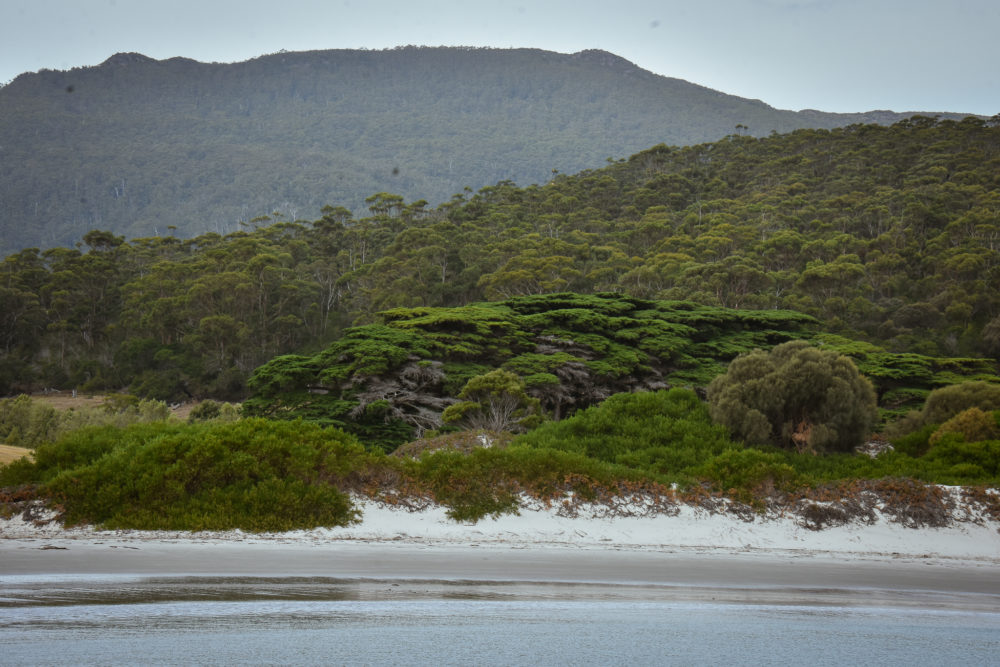
Beach, Fir Trees and Mountains on First Arrival to Maria island
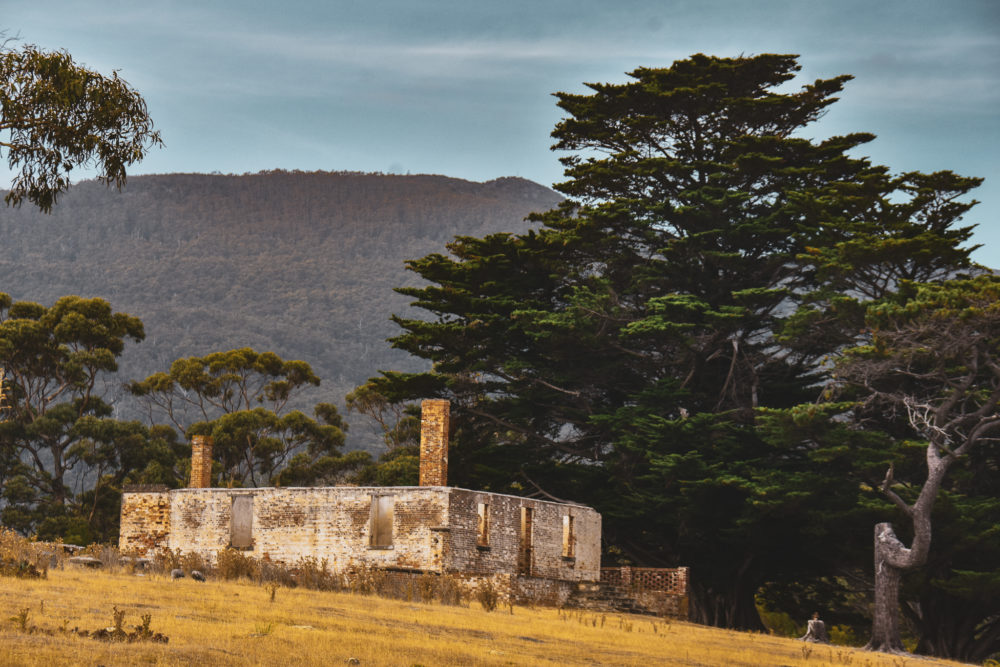
Ruined penal buildings from 1800s’
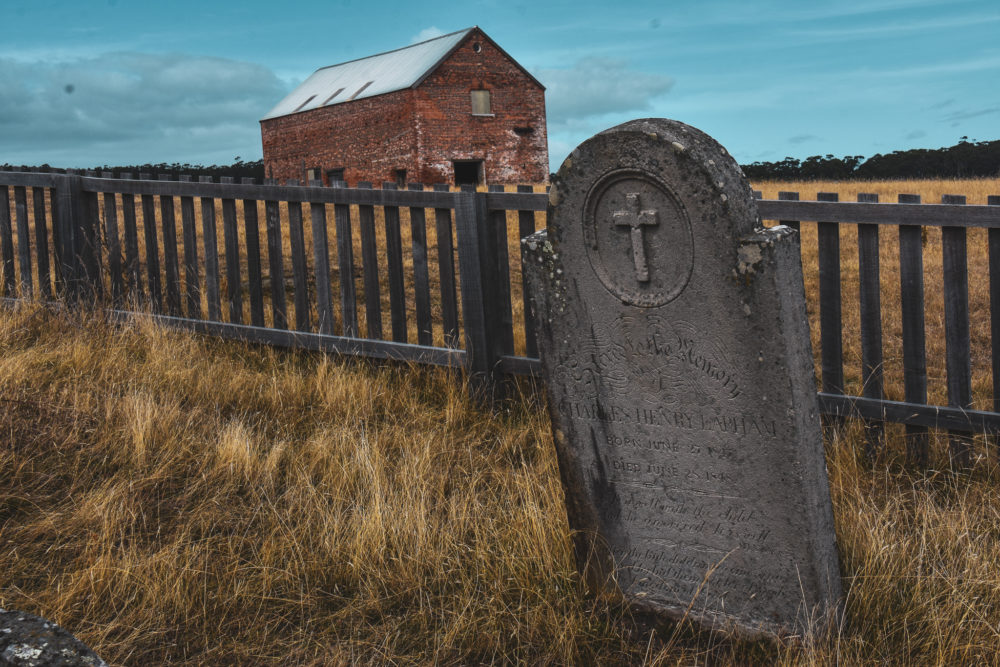
Graveyard from the Penal Era in 1800s
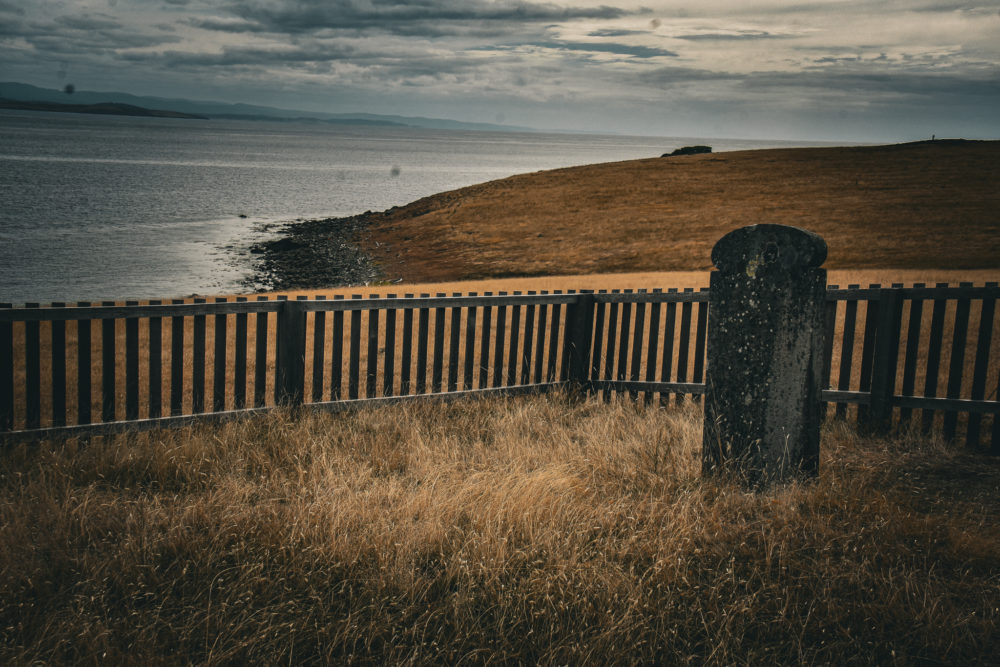
Graveyard from the Penal Era in 1800s
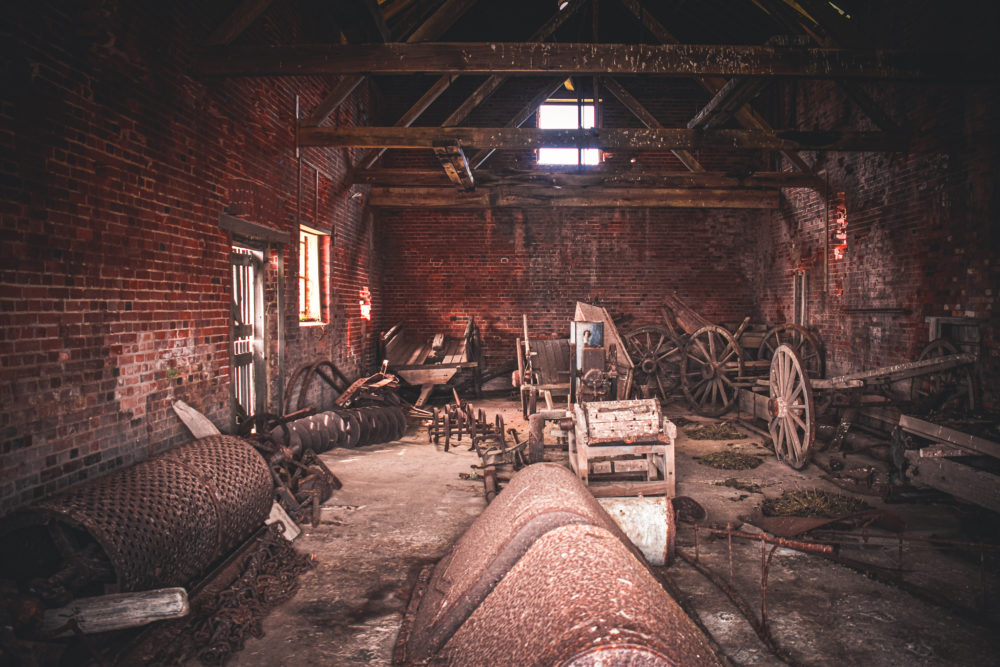
Old tools and abandoned Equipment
Wombats
We came to see wombats and we didn’t leave disappointed. However, at first, we were a little worried. We expected herds of them from the reviews we read but when we arrived after walking for an hour, we were still wombat less. We were so in love with these furry fat creatures that we even bought a stuffed wombat for our daughter to be from the Maria Island visitor center back in Triabunna. We were determined to not leave the island unless we saw a wombat. We came across another bicyclist taking a rest, and I asked him if he knew where the wombats were. He gave me a very important tip. I needed to search the inside of the forests where they stay until late in the day when they exit the forests to graze. We immediately returned to the forest and went into the grove of tall fir trees and after bush whacking for 10 minutes and still not seeing any wombats, I found one and dropped down on my butt about 5 feet away from the little guy who was resting in his burrow. I quietly alerted Paula to follow, and she pointed out another even bigger wombat just 5 feet away from me next to the creek behind me. There we were seated in the forest next to a creek in Tasmania in the blissful company of two wombats. On the most part, the wombats didn’t seem to mind our presence and we tried to give them their space to keep it this way. But every once in a while, the wombats would look up at us and quickly hide their head in their paws. it seemed to us that the wombats figured that if they could hide their heads in their paws that we would go away. Paula tried to take a photo of herself with the wombat behind her from a few feet away and this proved to be the final straw for one wombat, who started expressing his anger in some mysterious chirping language and the proceeded to waddle his furry butt away into the forest.
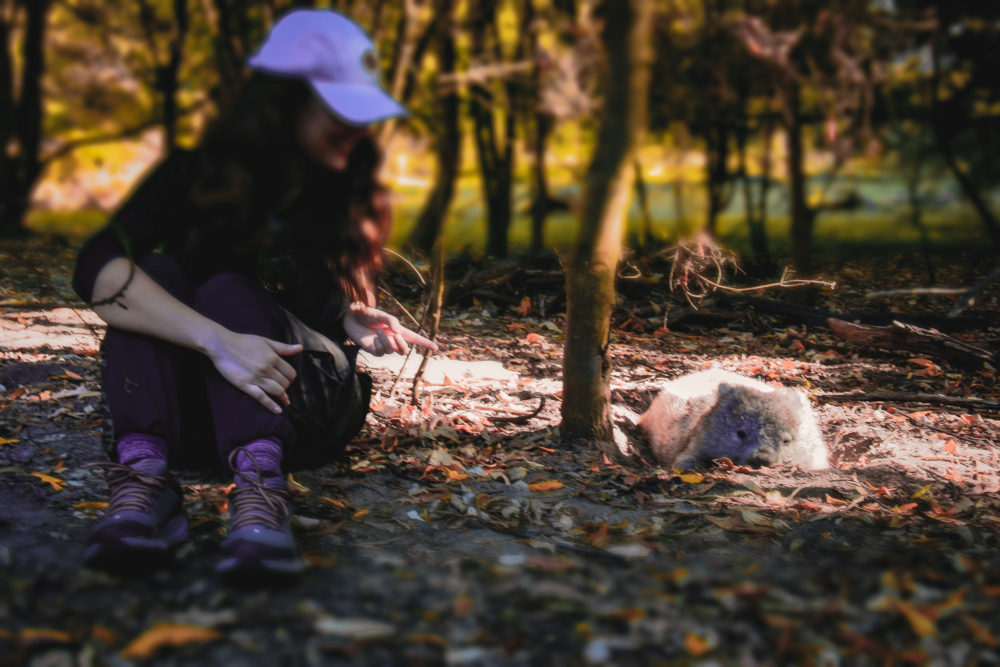
Paula and a wombat in the forest
We felt bad and left the wombats in peace and we would later realize that these wouldn’t be the only wombats we would see during the day. We would later on oin the day see several more wombats along the edge of the forest and one occasion we would even see a mother and baby wombat. It was the darn cutest thing we might have ever seen. The mother would wobble along the grass and the baby would race to stay as close to her as possible and the two would pause to nibble on grass before setting off for new grazing grounds every few seconds.
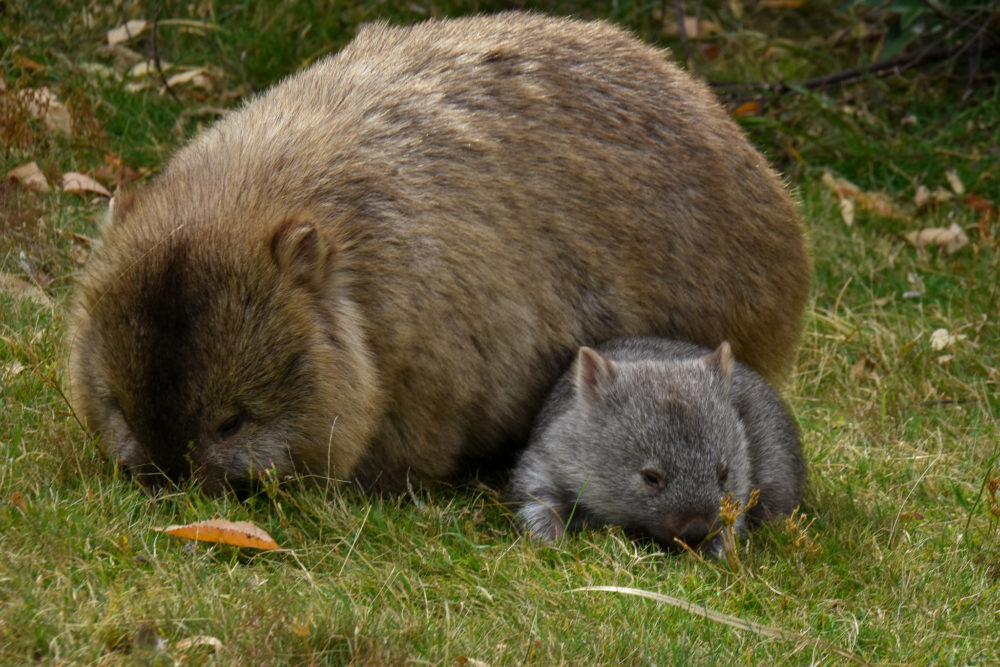
Mother and baby wombat
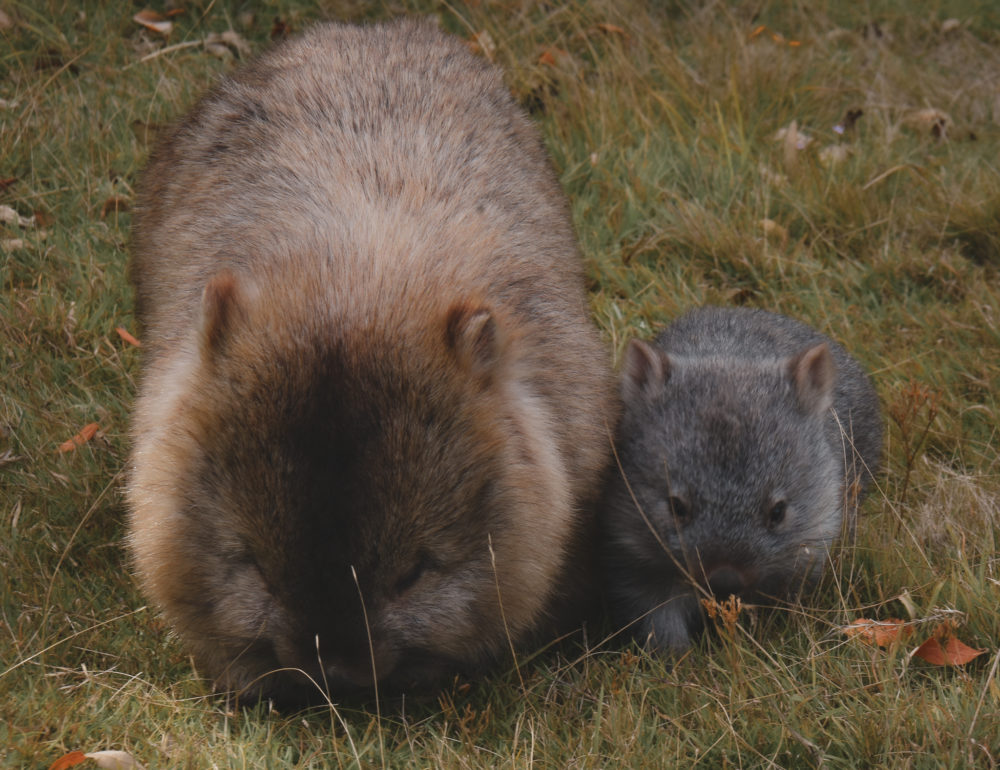
Mother and baby wombat
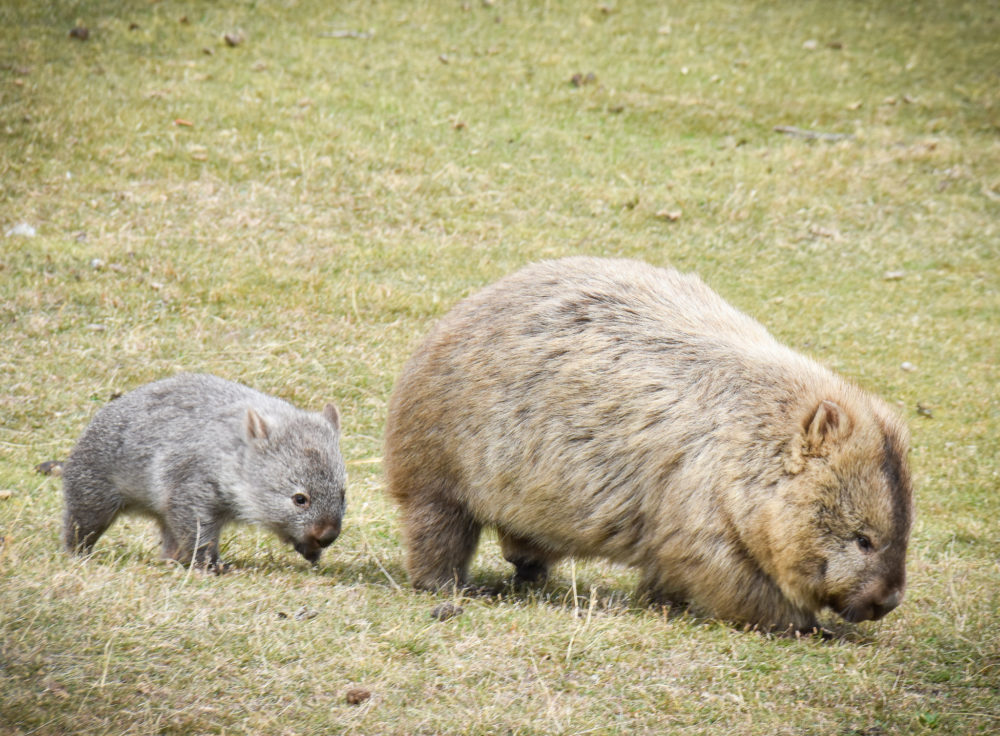
Mother and baby wombat
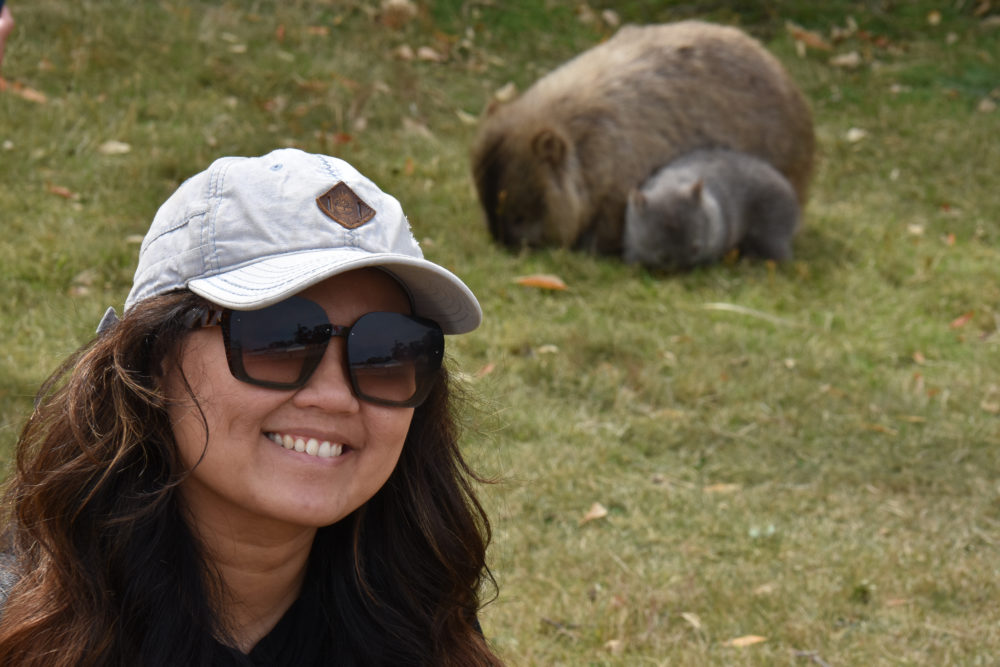
Paula in front of Mother and baby wombat
Other Animals
Maria island is also a haven for other animals and kangaroo, pademelons, parrots and geese are commonly seen everywhere. There are also Tasmanian Devils though nocturnal and elusive. The only one I would see in Tasmania is one that was dead on the road. Another animal I didn’t realize lived on Tasmania especially Maria Island until later was the very venemous Tiger snake, which has bitten tourists on the island in the past sending them by emergency helicopter to Hobart.
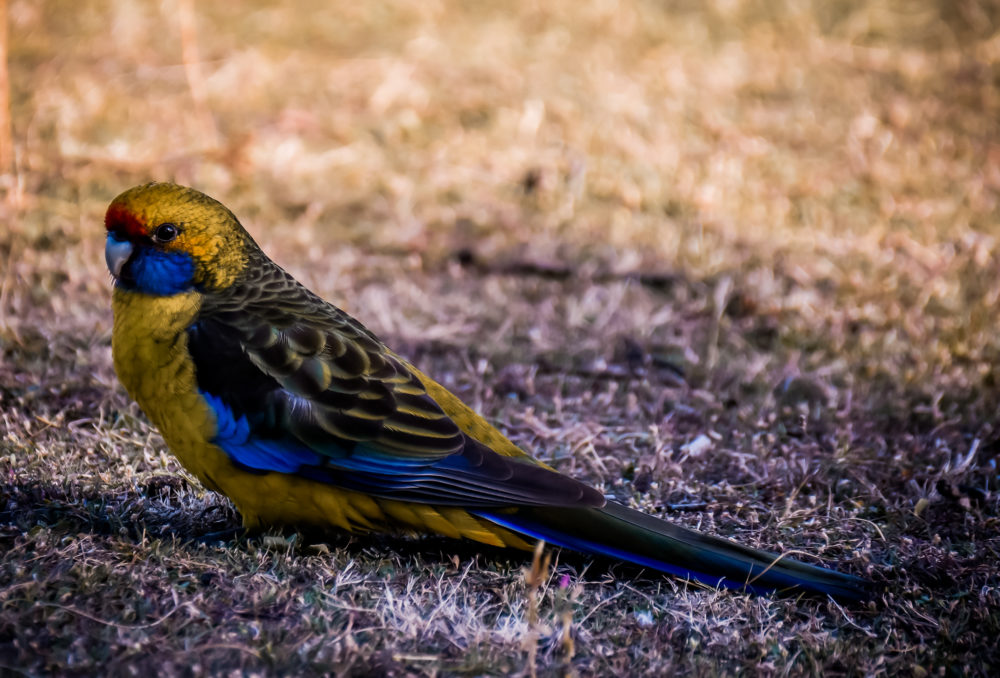
Colorful parrots
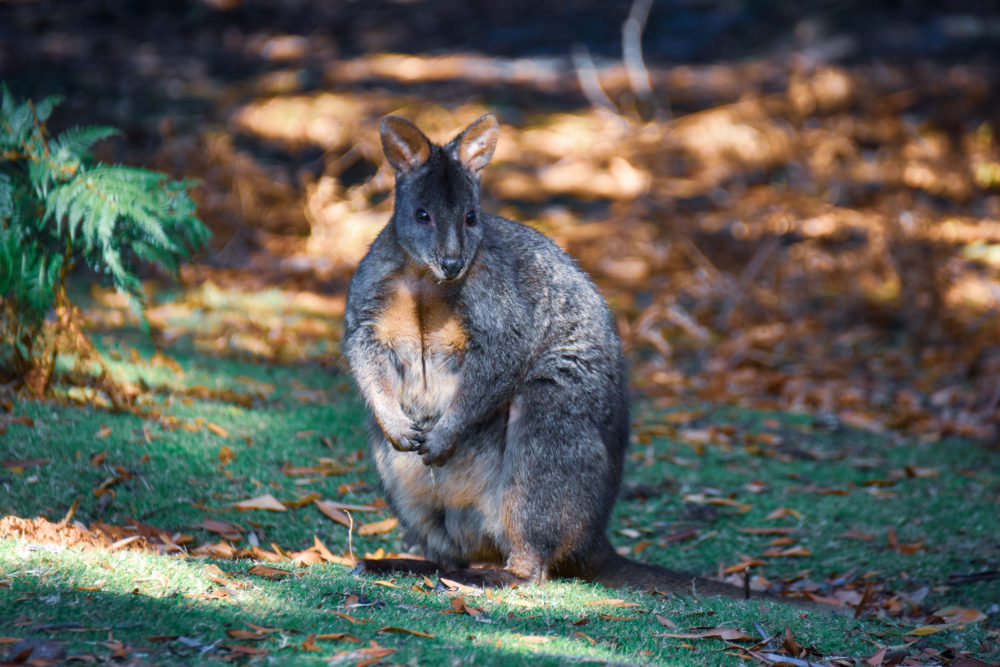
Pademelons-I gave this guy respect because he looked like he might kick my ass
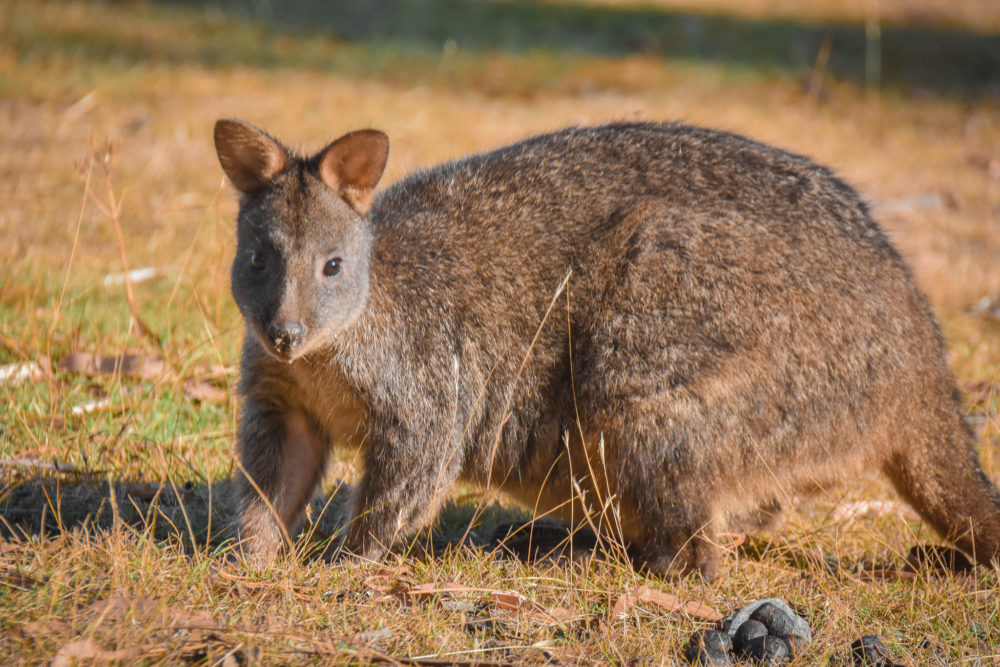
Pademelons
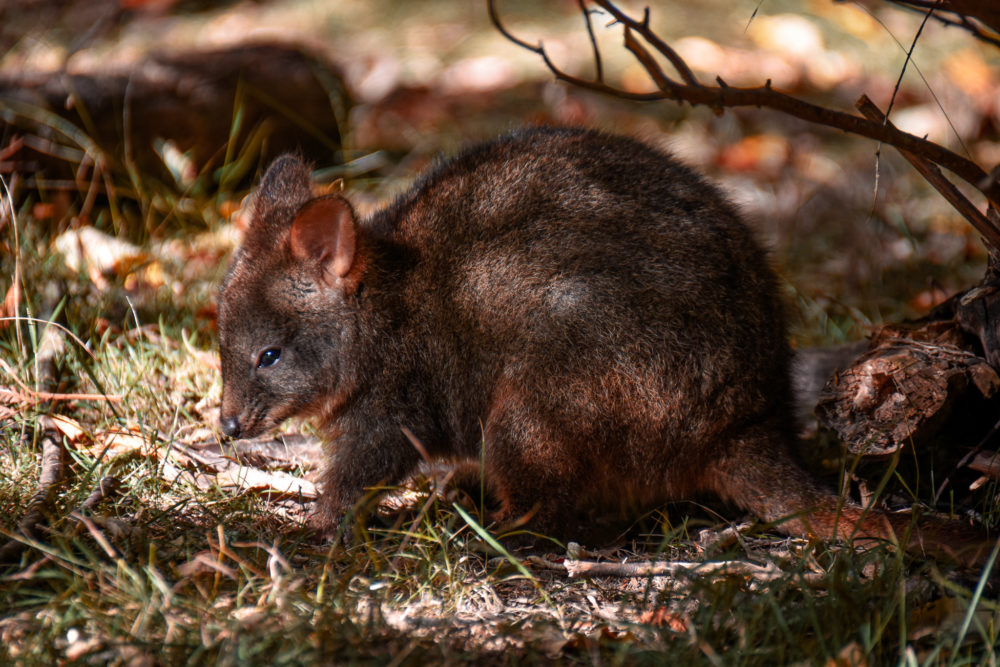
Pademelons
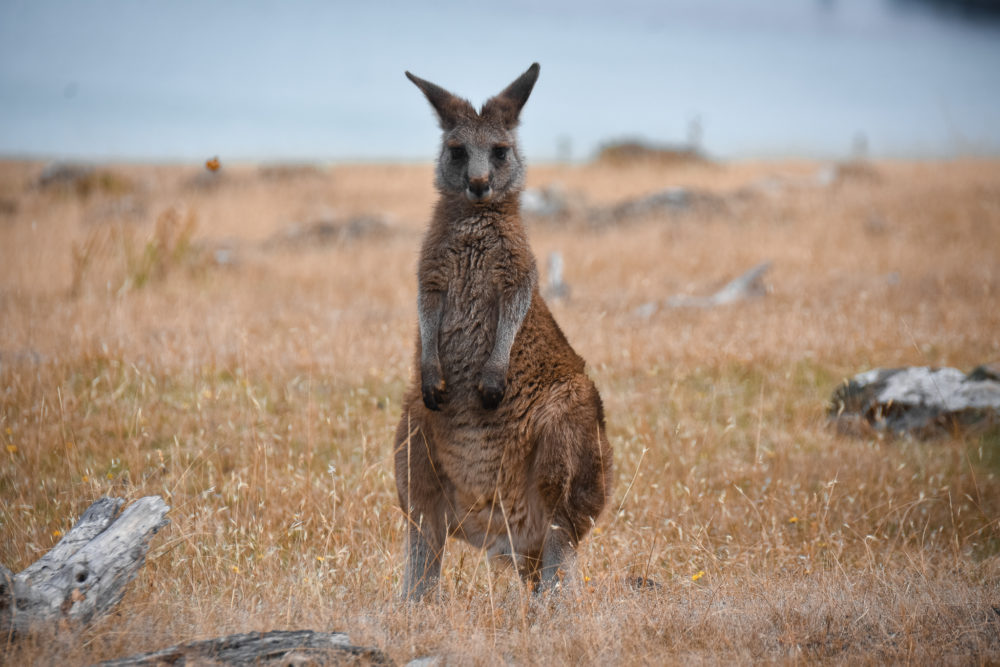
Kangeroo
Incredible Scenery
The scenery on the island is stunning and there are few other tourists and most of the time we were along in our hike. We had a great time hiking in Maria Island, and we hiked to the Fossil Cliffs and had lunch beneath a small grove of trees clinging to the edge of the cliffs. There are hundreds of miles of hiking and bike trails on the island, and I only wish we had more time to explore and camp in remote areas of the island.
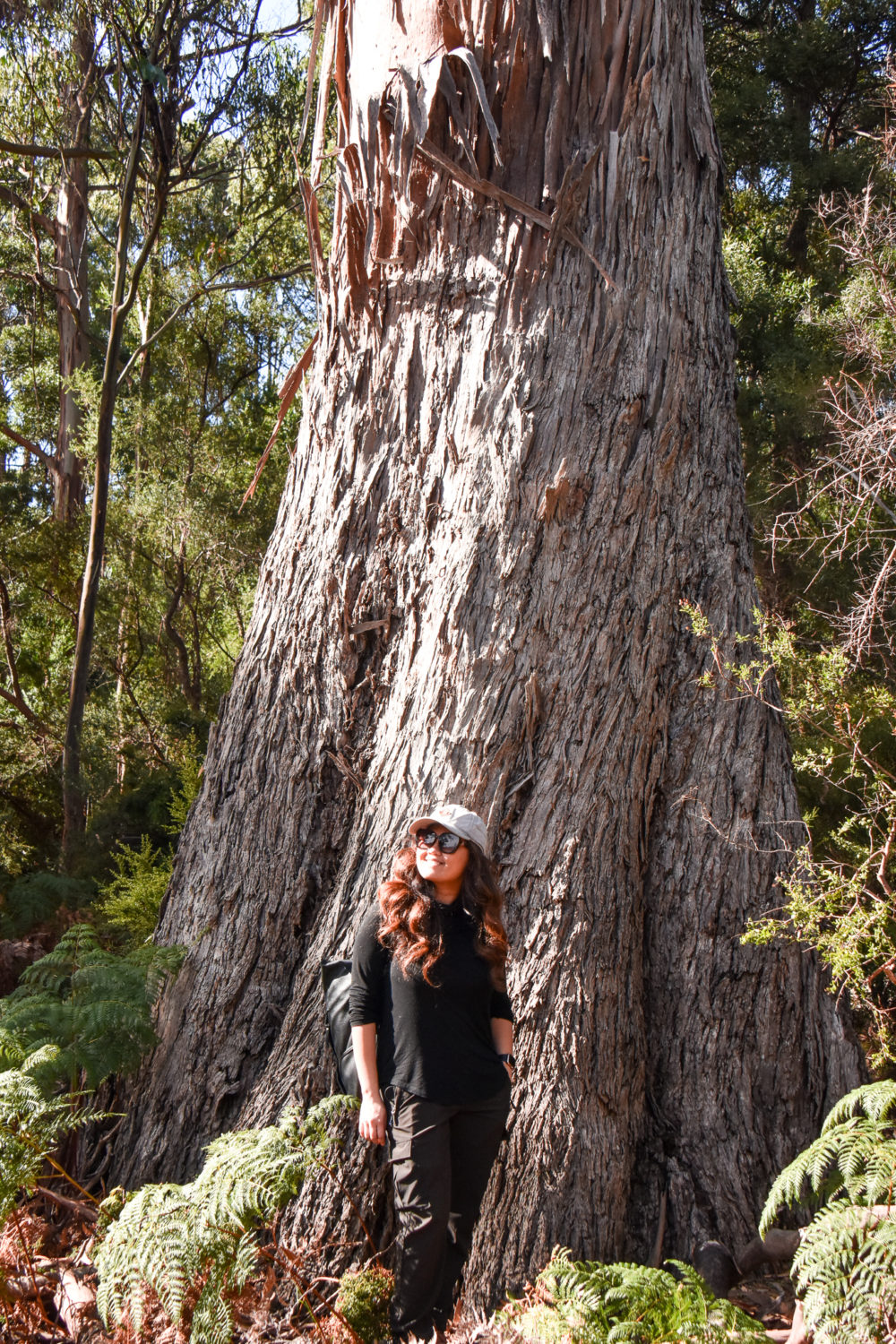
Giant Eucalalutus Tree
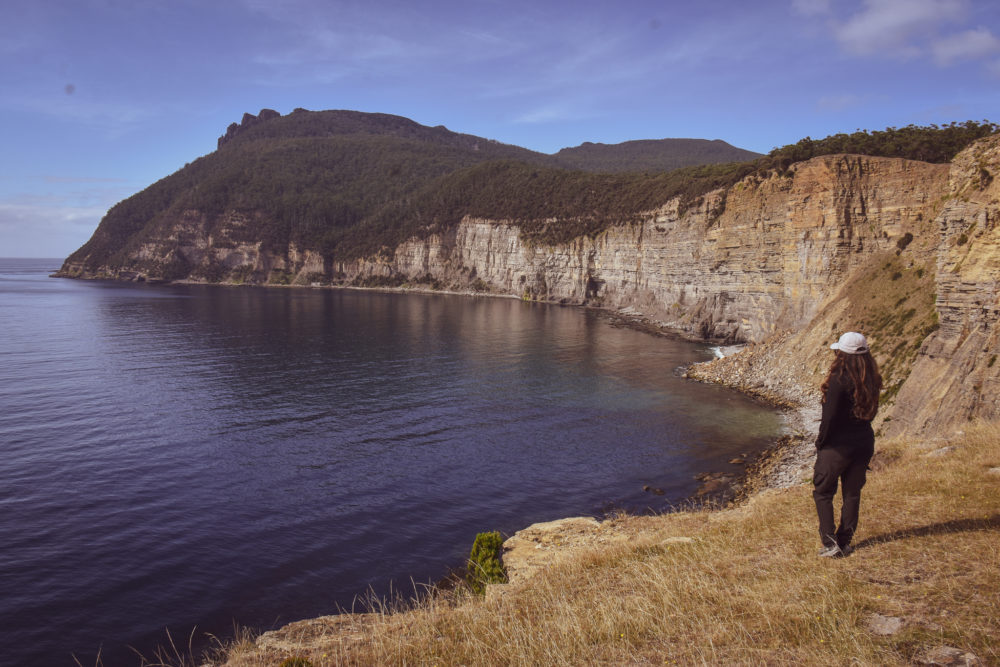
Fossil Cliffs
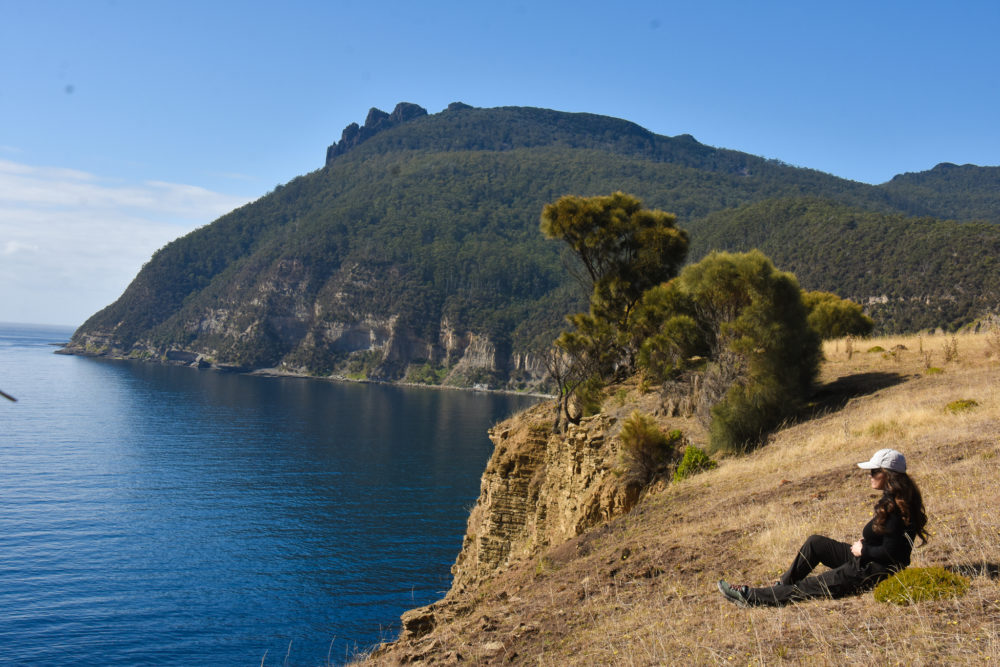
Fossil Cliffs
Short Stop-Over in Brisbane to Visit Koalas
Our cute and cuddle creature adventures weren’t over yet. After Tasmania, Paula and I had a short layover for the night in Brisbane, North Queensland, where we would need to depart on Nauru Airlines to Nauru early the next morning. We took advantage of our time to visit the Koala reserve and take a family photo with a Koala with strong claws. We also finally saw our first Tasmanian Devil, sadly we had to leave Tasmania to see one and it was in the Koala Reserve.

Family Photo
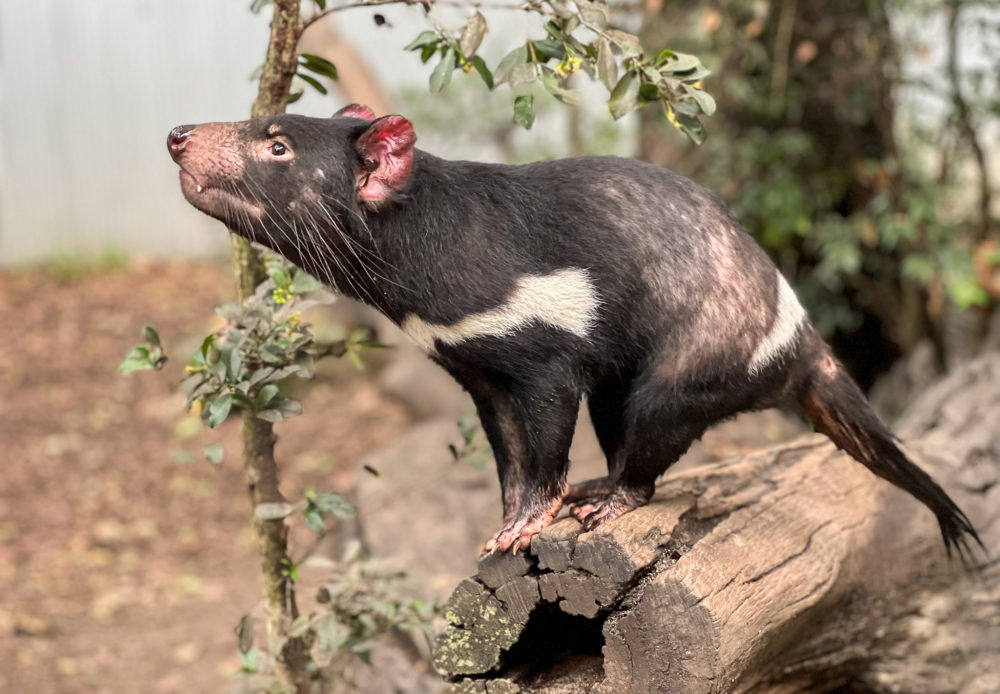
Tasmania Devil

